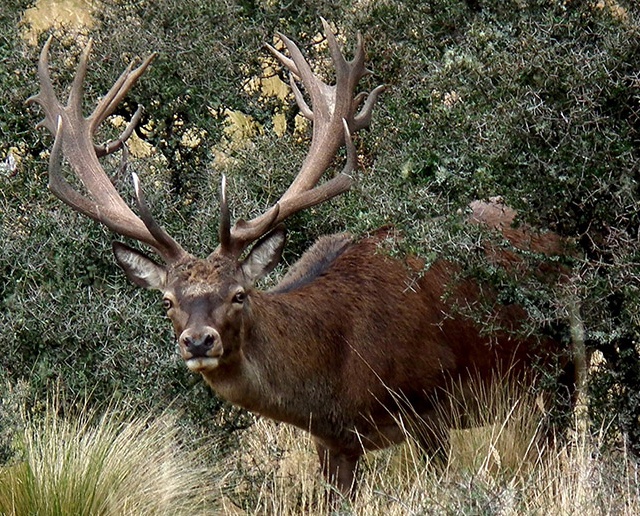


Hunting Experiences
06 May 2016
Imagine the scene. I have stalked in close to a trophy red stag. Real close, but he has finally twigged something is wrong. His feeding has stopped; he looks up and eyeballs my camouflaged position. He tries with nose, ears and sight to ascertain the nature of the danger facing him. Then he sees my silhouette, gets a whiff of man-scent and now he is fully alarmed. His eyeballs bulge as recognition sets in, his body stiffens and his muscles go taut. He clumsily spins around and runs, but he has paused too long. My finger had already twitched milliseconds before he broke the trance and fled.
Had my weapon of choice been a rifle or bow, his panicked flight would soon result in death but luckily for this big boy he has been snapped, not shot. That twitch of the index finger has pushed a camera button, not squeezed a trigger. This memorable shot now graces my wall as a canvas print.
I have written hunting articles for thirty years, and would never submit one for publication without having at least 30% of the accompanying photographs being of live animals relevant to the hunting tale being told. It is a no brainer as readers, both hunters and non-hunters, want to see what the big game in the area looks like. From the perspective of hunting a season may be from late February to September, but photography is a twelve month activity without the need to get up early or stay out late. Cameras don’t like low light conditions.
What makes a quality wildlife shot? In my opinion, the animal or animals snapped should be alert, be close, the lighting should be good, and the backdrop show a wild environment. If seeking trophy animal shots then the male snapped should be a true trophy. In a free-range situation getting all of these factors to align is not easy. The eyes of the subject animal are crucial in a photo as they are windows to his or her thoughts; also crucial is crisp focus and depth of colour. Another tip is to avoid relying on the zoom accessory to take close-ups, but stalk closer. The quality of a close photo compared to a zoomed photo is huge.
A place like Poronui is a photographer’s dream as it has plenty of game, lots of different species, land suited to stalking in close, trophy stags and bucks, and lots of non-trophy animals who are just plain cute. It is not an easy task, but around every fold in the property is another photo opportunity. Two of my favourites are included in this blog and focus on a chamois buck from down south and a cute mother/daughter pair of rusa.
The main species you will see at Poronui Estate are red, sika, rusa and fallow deer. My camera is a Canon but there are many great brands out there waiting for you to get snapping.
Want to ask a question about Poronui, personalise your vacation with bespoke itinerary options or find out about available dates?
Simply fill in your name and contact email address with a short message and we will get back to you.